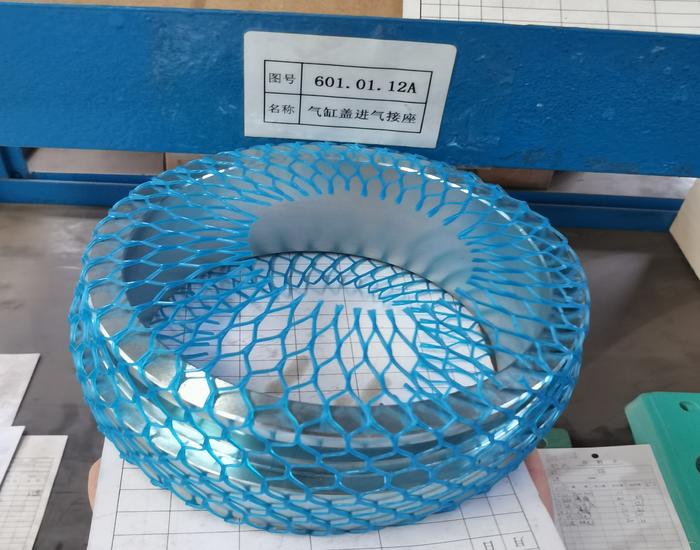汽油发动机将汽油的能量转化为动能来驱动汽车,简单的办法是通过在发动机内部燃烧汽油来获得动能。因此,汽车发动机是内燃机----燃烧在发动机内部发生。
The gasoline engine converts the energy of gasoline into kinetic energy to drive the car. The simple way is to obtain kinetic energy by burning gasoline inside the engine. Therefore, the automobile engine is an internal combustion engine -- combustion occurs inside the engine.
有两点需注意:
There are two points to note:
1. 内燃机也有其他种类,比如柴油机,燃气轮机,各有各的优点和缺点。
1. There are other types of internal combustion engines, such as diesel engine and gas turbine, which have their own advantages and disadvantages.
2. 同样也有外燃机。在早期的火车和轮船上用的蒸汽机就是典型的外燃机。燃料(煤、木头、油)在发动机外部燃烧产生蒸气,然后蒸气进入发动机内部来产生动力。内燃机的效率比外燃机高不少,也比相同动力的外燃机小很多。所以,现代汽车不用蒸汽机。
2. There are also external combustion engines. The steam engine used in early trains and ships was a typical external combustion engine. Fuel (coal, wood, oil) burns outside the engine to produce steam, which then enters the engine to generate power. The efficiency of internal combustion engine is much higher than that of external combustion engine, and much smaller than that of external combustion engine with the same power. Therefore, modern cars do not use steam engines.
相比之下,内燃机比外燃机的效率高,比燃气轮机的价格便宜,比电动汽车容易添加燃料。
这些优点使得大部分现代汽车都使用往复式的内燃机。
In contrast, internal combustion engines are more efficient than external combustion engines, cheaper than gas turbines, and easier to add fuel than electric vehicles< br/> & nbsp; These advantages make most modern cars use reciprocating internal combustion engines.
二、燃烧是关键
2、 Combustion is the key
汽车的发动机一般都采用4冲程。(马自达的转子发动机在此不讨论,汽车画报曾做过介绍)
Automobile engines generally use 4-stroke. (Mazda's rotor engine will not be discussed here, which has been introduced by auto illustrated)
4冲程分别是:进气、压缩、燃烧、排气。完成这4个过程,发动机完成一个周期(2圈)。
The four strokes are: intake, compression, combustion and exhaust. After completing these four processes, the engine completes one cycle (2 turns).

理解4冲程
Understand 4-stroke
活塞,它由一个活塞杆和曲轴相联,过程如下:
The piston is connected with the crankshaft by a piston rod. The process is as follows:
1.活塞在顶部开始,进气阀打开,活塞往下运动,吸入油气混合气
1. The piston starts at the top, the intake valve opens, and the piston moves downward to suck in the oil-gas mixture
2.活塞往顶部运动来压缩油气混合气,使得爆炸更有威力。
2. The piston moves to the top to compress the oil-gas mixture, making the explosion more powerful.
3.当活塞到达顶部时,火花塞放出火花来点燃油气混合气,爆炸使得活塞再次向下运动。
3. When the piston reaches the top, the spark plug releases sparks to ignite the oil-gas mixture, and the explosion makes the piston move downward again.
4.活塞到达底部,排气阀打开,活塞往上运动,尾气从汽缸由排气管排出。
4. When the piston reaches the bottom, the exhaust valve opens, the piston moves upward, and the tail gas is discharged from the cylinder through the exhaust pipe.
注意:内燃机终产生的运动是转动的,活塞的直线往复运动终由曲轴转化为转动,这样才能驱动汽车轮胎。
Note: the motion generated by the internal combustion engine is rotation, and the linear reciprocating motion of the piston is finally converted from the crankshaft to rotation, so as to drive the automobile tire.
三、汽缸数
3、 Number of cylinders
发动机的核心部件是汽缸,活塞在汽缸内进行往复运动,上面所描述的是单汽缸的运动过程,而实际应用中的发动机都是有多个汽缸的(4缸、6缸、8缸比较常见)。
我们通常通过汽缸的排列方式对发动机分类:直列、V或水平对置(当然现在还有大众集团的W型,实际上是两个V组成)。见下图
The core component of the engine is the cylinder, and the piston moves back and forth in the cylinder. The above description is the movement process of a single cylinder, while the engine in practical application has multiple cylinders (4, 6 and 8 cylinders are common)< br/> & nbsp; We usually classify the engine by the arrangement of cylinders: in-line, V or horizontal opposed (of course, there is now the W-type of Volkswagen Group, which is actually composed of two V). See the figure below
直列4缸
In line 4 cylinder
水平对置4缸
Horizontal opposed cylinder 4
不同的排列方式使得发动机在顺滑性、制造费用和外型上有着各自的优点和缺点,配备在相应的汽车上。
Different arrangement makes the engine have their own advantages and disadvantages in smoothness, manufacturing cost and appearance, which are equipped on the corresponding vehicle.
四、排量
4、 Displacement
混合气的压缩和燃烧在燃烧室里进行,活塞往复运动,你可以看到燃烧室容积的变化,大值和小值的差值就是排量,用升(L)或毫升(CC)来度量。汽车的排量一般在1。5L~4。0L之间。每缸排量0。5L,4缸的排量为2。0L,如果V型排列的6汽缸,那就是V6 3。
0升。一般来说,排量表示发动机动力的大小。
The compression and combustion of the mixture are carried out in the combustion chamber. The piston moves back and forth. You can see the change of the volume of the combustion chamber. The difference between the large value and the small value is the displacement, which is measured in liters (L) or milliliters (CC). The displacement of a car is generally 1. 5L~4。 Between 0l. Displacement per cylinder 0. 5L, the displacement of cylinder 4 is 2. 0l, if there are 6 cylinders arranged in V-shape, it is V6 3< br/> & nbsp; 0 liter. Generally speaking, the displacement represents the power of the engine.
所以增加汽缸数量或增加每个汽缸燃烧室的容积可以获得更多的动力。
Therefore, increasing the number of cylinders or increasing the volume of combustion chamber of each cylinder can obtain more power.
五、发动机的其他部分
5、 Other parts of the engine
凸轮轴 控制进气阀和排气阀的开闭
The camshaft controls the opening and closing of the inlet and exhaust valves
火花塞 火花塞放出火花点燃油气混合气,使得爆炸发生。火花必须在适当的时候放出。
The spark plug is ignited by the mixture of oil and gas. Sparks must be released at the right time.
阀门 进气、出气阀分别在适当的时候打开来吸入油气混合气和排出尾气。在压缩和
The inlet and outlet valves of the valve shall be opened at an appropriate time to suck in the oil-gas mixture and discharge the tail gas. In compression and
燃烧时,这两个阀都是关闭的,来保证燃烧室的密封。
During combustion, both valves are closed to ensure the sealing of the combustion chamber.
活塞环 在气缸壁和活塞中提出密封:
The piston ring raises the seal in the cylinder wall and piston:
1.防止在压缩和燃烧时油气混合气和尾气泄漏进润滑油箱。
1. Prevent the oil-gas mixture and tail gas from leaking into the lubricating oil tank during compression and combustion.
2.防止润滑油进入汽缸内燃烧。
2. Prevent lubricating oil from entering the cylinder for combustion.
大多“烧机油”的汽车就是因为发动机太旧:活塞环不再密封引起的(尾气管冒青烟)
Most "oil burning" cars are caused by the old engine: the piston ring is no longer sealed (the exhaust pipe emits blue smoke)
活塞杆 连接活塞环和曲轴,使得活塞和曲轴维持各自的运动。
The piston rod connects the piston ring and the crankshaft so that the piston and the crankshaft maintain their respective motion.
润滑油槽 包围着曲轴,里面有相当数量的油。
The lubricating oil groove surrounds the crankshaft and contains a considerable amount of oil.
 全国服务热线:
全国服务热线:
 全国服务热线:
全国服务热线: 济南济柴环能燃气发电设备有限公司
济南济柴环能燃气发电设备有限公司



